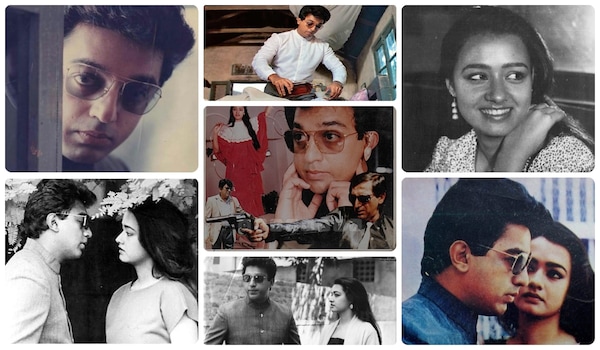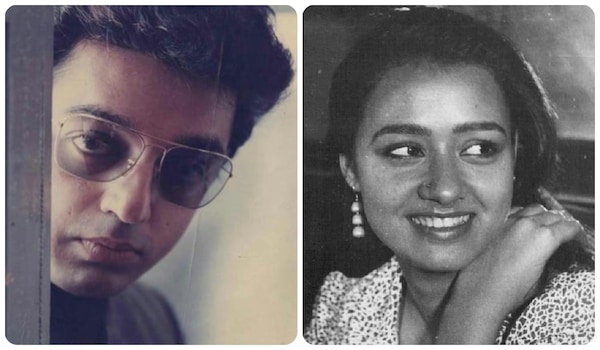35 Years of Pushpaka Vimana: Revisiting a most brilliant cinematic experiment
From being originally conceived as a "serious" film titled Advaitham to the serendipitous Dr. Rajkumar connection, Singeetam Srinivas Rao's cult classic defied conventions all throughout.

Last Updated: 11.36 PM, Nov 27, 2022
Pushpaka Vimana, or Pushpak, can be seen as the ideal actor-director collaboration. For filmmaker Singeetam Srinivasa Rao, the film was an amalgamation of personal experience and an unquenchable creative zest. For Kamal Haasan, the film's leading man, it was yet another excuse to foray into experimental cinema and prove his mettle as a one-of-a-kind leading man of his time. So, when the two decided on joining forces in an uncompromising manner, the result turned out to be a film that spoke very little in the literal sense but made substantial noise as a bizarre but equally alluring cinematic experience that caught the entire nation off guard.
And 35 years down the line, Rao's Pushpaka Vimana remains one of the most daring and flamboyant experiments in the history of cinema: so much so that its fandom finds a new edge with each passing year as cinephiles attempt to dig deeper into its ethos.
Speaking of the ethos, tragicomedies or black humour in cinema was a rare encounter for the Indian film audience back in the '80s. To make things only trickier, the film was a dialogue-less crime caper with sociopolitical subtexts referring to the post-Indira Gandhi era's unemployment crisis in India. Political cinema in India, at the time, was considered to be something devoid of the promised value-for-money entertainment and, in this vein, Singeetam Srinivas Rao's biggest achievement with Pushpak would be that he bridged that gap with great finesse and stealth.
And yet, interestingly, Rao's original conception of the film was worlds apart from its eventual satirical, semi-Chaplinesque tone but when Haasan came into the picture, he was luckily able to imbue the project with a sense of fun and cheer.
"He [Singeetam Rao] first narrated the idea while we were making Raja Paarvai/Amavasya Chandrudu (1981) but at the time, he was quite keen on making "serious" cinema like Dikkatra Parvathi (1974). So, when he narrated the idea to me, he did so carrying the mood to make serious stuff and the film was originally titled 'Advaitham'. But I reckoned that if we made it that way, the film would end up becoming an art film. Although every film is an art film, I said why not make it similar to a Charlie Chaplin film that is fun and entertaining? That's how I became a partner in creating Pushpak," said Kamal Haasan in an interview dating a few years ago.

The Dr. Rajkumar connect
For Singeetam Srinivas Rao, putting the film together proved to be a journey of its own. As much as Haasan served as his creative sounding board, he still needed a producer to fund his vision and at the same time, not be sceptical of his decision to do so.
"Kamal Haasan had already produced the 1981 film Raaja Paarvai but the film was a commercial failure. And with Pushpak, I chose not to ask or request anyone to produce the film because I wanted the person to be excited about backing the film - I wanted the idea to excite them. I remember speaking to Ramoji Rao sir at the time and his response was simple: since this is a dialogue-less film, it's difficult for anyone to gauge both its merits and risks," shares Rao.
This was an interesting conundrum on the hands and Ramoji Rao's advice was equally queer. Rao was suggested to approach 6 people and narrate to each of them the idea of Pushpak for honest feedback - if even half of them liked it, he could go ahead and make it. And if less than half or no one responded to it positively, he could still make the film but only based on his conviction as a filmmaker.
"I first went to filmmaker Vijaya Bapineedu who really liked the idea and gave me a go-ahead. I then went to music composer Chakravarthi and thankfully, he too loved the story and gave me the confidence to forge on. Now, I need only one more nod and for that, I got in touch with the outstanding director Kranthi Kumar. Turned out that he too really enjoyed what I was after but he also posed a concern: this film will be great only if you are able to bring your vision onto the screen. And yet, none of them was keen enough to produce the film."
"During this development, I was in Bengaluru working with Rajkumar sir on a Kannada film. There, I came across this person who, at the time, worked as a foreign tour organizer - he was Dr. Rajkumar's family friend at the time and interestingly, played small parts in many of his films. This is Shringar Nagaraj whom I refer to. One day, he and I were at the Janardhan Hotel and I happened to share the Pushpaka Vimana idea with him without really meaning anything and much to my surprise, Mr. Nagaraj said that he wanted to produce it! I was baffled at first because here's a producer who has never made a film before and in fact, is a tour organizer! But he did eventually produce Pushpaka Vimana and I must declare that he is the real reason why the film came to be. Not Singeetam Srinivas Rao, not Kamal Haasan, but Shringar Nagaraj," adds Rao.
Pushpaka Vimana worked against the expectations of the audience and industry trackers and was declared a sleeper hit which ran for 35 weeks straight in Bengaluru. The cast also includes Amala, Samir Khakhar, Tinu Anand, K.S. Ramesh, Pratap Potan, P.L. Narayana, and Loknath with L. Vaidyanathan scoring the music. B. C. Gowrishankar handled the cinematography.

 Premium
Premium